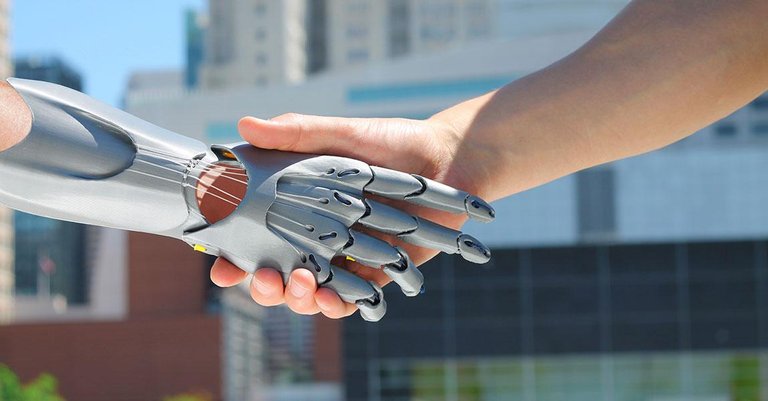
Prosthetic limbs are an amazing medical technology. With prosthetic limbs, people who would never be able to walk again, walk. People that would never be able to hold their loved one's hand ever again, can. Prosthetic limbs are also becoming better and better. They are making the patients be able to use them easier and more comfortable.
Mind Controlled
At John Hopkins University engineers have created a technology so that prostheses can be controlled by a mere thought. The robotic arm they have created has 26 joints, 100 sensors, and can curl up to 45 pounds. When attaching one of these prostheses they have to remap the remaining nerves that are still in the arm so that the patient's mind can control the prosthetic. Then they create the custom socket that can pick up the brain signals. As the nerves grow deeper the patient may be able to feel textures and sensations. These prostheses are called Modular Prosthetic Limbs or M.P.L.
Higher Comfort
The socket is the most important part of a prosthetic. If it doesn't fit correctly then it can cause pain or blisters. Therefore, engineers have come up with a way to attach prostheses without these painful sockets. If patients get a surgery called osseointegration they don't have as many limitations with their prostheses. In osseointegration, they put a special device called a Compress into the marrow space of the bone. This creates a strong connection between the implant and bone. Later they put an adapter in the skin so the Compress is directly connected with the prosthetic on the outside of the body. They have used this surgery on an M.P.L. which is the most sophisticated prosthetic ever.
3-D Printing
A faster and easier way to produce prosthetic limbs: 3-D printing. You design it on the computer and print it out on a 3-D printer. It is also cheaper for the patients to buy rather than a traditional prosthetic.
Lyman Connor
Lyman Connor works for a non-profit organization called Handsmith in Roanoke, Virginia. At this organization, they were trying to figure out a way to make and sell prosthetic limbs cheaper than traditional prosthetic limbs. He was inspired by a little boy who wasn't born with one of his hands. His family couldn't afford to pay for a prosthetic hand. Lyman Connor spent a lot of time figuring out how to print a prosthetic. He successfully figured out how to print one out and it is about 40,000 dollars cheaper than a traditional prosthetic.
K-1 3-D Printed Prosthetic
The K-1 is a 3-D printed prosthetic they are currently designing. It is going to be free to download so you can print it yourself on certain 3-D printers. To go along with that there is going to be a tutorial to show the users how to print it and put it together. Four universities will be designing it and will be provided with multiple 3-D printing technologies.
Thank you for reading!!
Sites where the information was from:
https://3dprint.com/72594/3d-systems-e-nable-k-1-hand/
http://www.jhuapl.edu/newscenter/pressreleases/2016/160112.asp
https://www.nytimes.com/2015/05/21/technology/a-bionic-approach-to-prosthetics-controlled-by-thought.html?_r=0
https://3dprint.com/161328/handsmith-bionic-hands/
The site where the picture was from:
https://3dprint.com/72594/3d-systems-e-nable-k-1-hand/
I am 1000% for prostethics. They can be extra beneficial for contemporary use to those lacking limbs, or other essential body parts. The hand shake however left me a little unnerved. The hand is a bond created by two humans in a greeting or agreement. It is as much to do with the physical contact (flesh to flesh) as it is the symbol of it. I had never thought about this until I saw this picture. :-0
Nice job here, prosthetics have truly been coming along amazingly in the past decade or so. I look forward to the day where we will have them so lifelike you will not be able to tell that someone is wearing one.